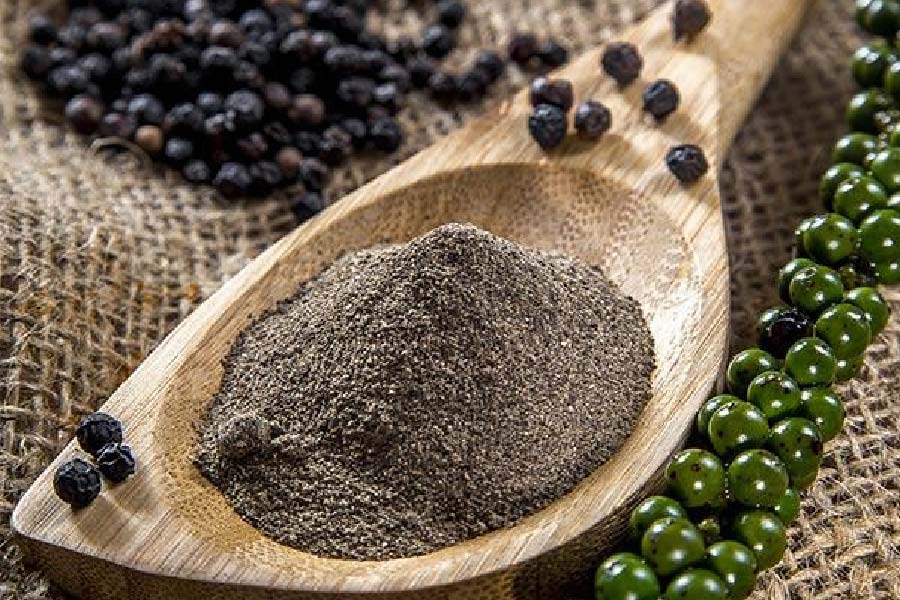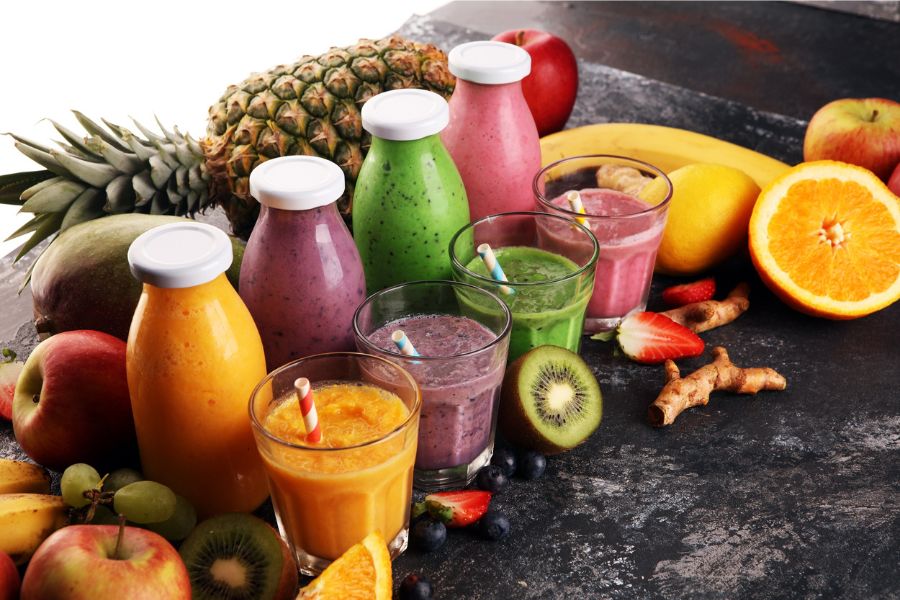Black pepper export: Reviving a lost legacy
Indian black pepper is undergoing a vicious cycle of declining production and cheap imports. This necessitates urgent measures to stem the drop in production and instill confidence in the farming community to re-establish India’s position in global pepper trade.
- Black pepper – traded under the HS Code 090411 is the world’s most traded spice and is expected to grow at a CAGR of 5% from 2019-2024.
- Vietnam – the largest producer and exporter of pepper sells it for US$ 2,800 per tonne, about less than half the price at which the Indian variety is priced i.e. US$ 6,000 per tonne. US, Germany, India, Vietnam, and Nepal are the biggest pepper importers while Vietnam, Brazil, Indonesia, Sri Lanka, and India are the largest exporters.
- India is turning into a net importer of pepper. Quantity of imports has grown at a rate of 8% between 2015 to 2019 while imported value has dropped by 16% during the same period.
- There could be a possibility of re-routing of cheaper Vietnamese pepper into India during 2017-18, and little possibility post that as well. Pepper might be entering India due to Sri Lanka’s decision to provide COOs to every commodity being re-exported through it.

Black pepper, scientifically known as Piper nigrum is the by-product of the process of drying the peppercorns – the fruits of a flowering vine called Piperaceae. Peppercorns have been used for eternity in dried, ground, and cooked forms. It is extremely common as a spice and seasoning in most countries; but uniquely, it is also the ‘most traded spice’.
South India and the Western Ghats are the main Indian regions where the crop finds a suitable growth environment. Globally, Asia constituted 69% of global average pepper production from 1994-2018, followed by the Americas and Europe; both constituting a share of close to 13.5%. The ‘king of spice’ as it is popularly called, is expected to grow production at a CAGR of 5% from 2019-2024.
Recognized as an invaluable spice in Ayurveda, this positive pranic food has been witnessing a rise in popularity, as people are moving to adapt an alternative lifestyle. This has got compounded with the pandemic, due to claims of it being immunity enhancing and having antimicrobial and antioxidant properties.
A Vietnames coup
Global industry is dominated by Vietnam, which accounts for about 34% of total production. The country produced 262.6 thousand tonnes in 2018, followed by Brazil, Indonesia, and India which produced 101.2 thousand tonnes, 88.7 thousand tonnes, and 67.47 thousand tonnes respectively. Vietnam switched to pepper production from coffee in 2004 – its major crop back then. This was done in response to attractive prices offered by the international food processing industry for black pepper and other exotic spices.
Vietnam became a global leader very quickly due to this specialization by mid-2004. Its pepper production grew at a CAGR of 8.1% throughout 2007-2018. Now, it is not only a leader in production but also highly price competitive. Vietnam sells pepper for US$ 2,800 per tonne; less than half the price of Indian pepper at US$ 6,000 per tonne and Indonesian pepper at US$ 3,200 per tonne in 2019.
US, Germany, India, Vietnam, and Nepal are the main importers of black pepper, while Vietnam, Brazil, Indonesia, Sri Lanka, and India are the main suppliers.
| Importers | Imported value in 2017 | Imported value in 2018 | Imported value in 2019 |
| World | 1,912.96 | 1,315.52 | 1,142.46 |
| US | 383.25 | 221.39 | 186.08 |
| Germany | 188.27 | 109.27 | 97.49 |
| India | 164.8 | 136.87 | 93.19 |
| Viet Nam | 66.54 | 48.65 | 65.11 |
| Nepal | 28.3 | 56.57 | 52.25 |
| Egypt | 55.71 | 37.68 | 46.08 |
| China | 20.75 | 23.25 | 38.36 |
| United Arab Emirates | 63.96 | 35.34 | 33.02 |
| France | 60.35 | 39.52 | 32.42 |
| Netherlands | 45.49 | 34.20 | 27.41 |
Source: UN Comtrade, Figures in US$ ‘000
Indian pepper exports: Loss of competitiveness
While India was a leading pepper producer years ago in the 1970s, it got replaced when Vietnam and then new competition came up, particularly in the form of Brazil and Indonesia.

India’s value of exports, as well as imports, has been slipping over the years. Export value grew at a CAGR of -33.1% and imports at -17% between 2015-2019. This is interesting, as yearly pepper consumption has remained more or less between 50,000 MT to 60,000 MT each year over the last 5 years according to International Pepper Community data. So this decline in the value of imports can be actually attributed to a decline in prices.
India has largely turned into a net importer of pepper. Its quantity of imports has grown at 8% between 2015 to 2019, while imported value, as mentioned earlier has dropped by 17% during the same period. This decline in global prices and the influx of imports into the country is pulling down Indian pepper prices, thereby compelling farmers to switch to other crops. Essentially, there seems to be a vicious circle in the case of pepper – Indian production is insufficient to satisfy domestic demand and at the same time, producers are moving to other crops instead of pepper due to low price realization; further contributing to low domestic production and hence, increased demand for imports.
Is pepper getting re-routed?
There is a school of thought that blames cheap Vietnamese pepper with a high content of pesticides being dumped into the Indian market through illegal routes as well as via FTAs. As supply in the market increases, prices are bound to decline sharply.
India’s imports of pepper from different countries
| 2016-17 | 2017-18 | 2018-19 | 2019-20 | |
| Sri Lanka | 32,830 | 55,169 | 38,960 | 22,640 |
| Vietnam | 47,785 | 36,757 | 23,457 | 19,099 |
| Indonesia | 26,000 | 8,141 | 12,680 | 9,357 |
| Brazil | 2,950 | 6,558 | 5,416 | 6,129 |
| Others | 2,026 | 2,458 | 3,936 | 2,491 |
| Total | 1,11,591 | 1,09,084 | 84,450 | 59,716 |
Source: Department of Commerce; value in Rs lakh
A clear trend of increase in the value of imports from Sri Lanka, Brazil and other countries and decline from Vietnam in 2017-18 displays a possibility of the surge in the aforementioned illegal and FTA routed imports. The imports quantity from Sri Lanka also increased YoY during the fiscal year 2017-18 by 174.96%, while it witnessed only a 10.6% surge from Vietnam. Further, this possibility gets strengthened as that was the period when duty with ASEAN countries was 70%, which reduced to 51% from January 2019 onwards only, while it was 8% with the SAFTA countries like Nepal and Sri Lanka. However, post this period, there is not much evidence that could dictate an increase from Sri Lanka and decrease from Vietnam as the import price varied vastly. The export price of Vietnam was US$ 3,396 per tonne and from Sri Lanka it was US$ 1,580 per tonne. That points towards Vietnam’s pepper being possibly of a niche variety.
This could also be because of the steps taken by the government post-2017-18; because of which the re-route became difficult. The government took several steps to protect the interests of the pepper farmers, such as the imposition of Minimum Import Price, making import of pepper at price above Rs. 500 per kilogram free and prohibiting pepper below Rs. 500 per kilogram; according to DGFT notification of 2018.
The results from our research indicate that re-route might have reduced after 2017-18 due to stringent measures by the government, however, we cannot neglect the ground level situation wherein Sri Lanka allowed the provision of a certificate of origin to any pepper being exported through it. Last year, Sri Lanka ensured a strict clampdown on re-exports of pepper to India to address this issue.
However. in March this year, the industry raised another concern. This time they found that markets in Rajasthan, Gujarat, Delhi and Maharasthra were receiving Brazilian pepper for re-export at ₹340 +GST .
While these issues are addressed at the appropriate levels, India needs to urgently work on measures like improving productivity, scaling up production and incentivising pepper processing to encourage farmers to grow more of the crop. This will serve to revive India’s competitiveness and help regain its legacy of being a leading pepper producer and exporter across much of recorded history.













Your article is insightful.